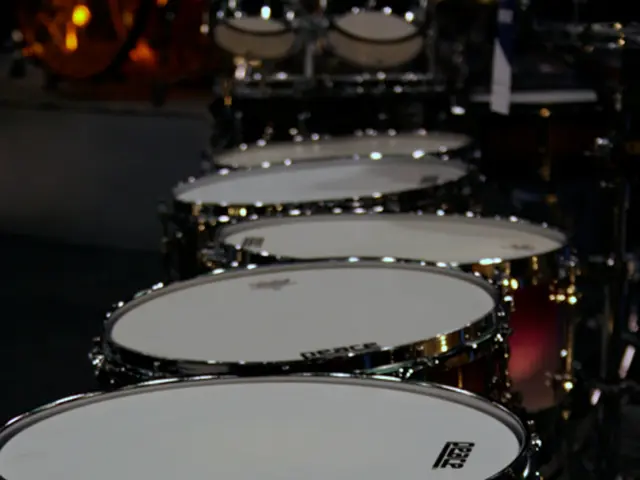India's Semiconductor Breakthrough May Be at Hand – Questioning Its Sincerity?
India is embarking on an ambitious journey in the semiconductor industry, with several significant developments and partnerships recently announced.
Kaynes Semicon and Infineon, two prominent players in the field, have teamed up to create India's first MEMs Microphone chips. This collaboration marks a significant step forward in India's quest to establish a strong presence in the semiconductor sector.
Simultaneously, Tata Electronics has announced plans to jointly develop semiconductor materials with German tech major Merck. This partnership could pave the way for advanced packaging technologies like CoWoS and HBM, which require expensive cleanrooms, machines, years of trial, learning, and well-established supply chains for specialized materials.
However, setting up large-scale manufacturing units in India is not without challenges. Allen Nejah, the chief innovation officer of Polymatech, has highlighted the numerous regulations and lack of hand-holding and clarity as major obstacles.
India is currently dependent on technology expertise and capital from Taiwan, China, and South Korea, nations that have taken decades to reach their current levels in semiconductor manufacturing. A senior official from Taiwan Semiconductor Manufacturing Company (TSMC) estimates that India would need another decade to build the necessary societal infrastructure to compete with existing semiconductor manufacturing economies.
Notably, the Tata Group is building a fabrication plant in Dholera, focused on making 28nm-110nm chips for automobiles, industrial systems, and electronics devices. Global players like Micron are also setting up assembly and testing units in Gujarat.
However, India's big upcoming fabs will work at the 28 nm level and nearby nodes, several generations behind the advanced 5 nm and 3 nm technologies used in AI-grade chips. To make AI-grade chips at scale, India lacks access to advanced chipmaking tools and processes, advanced packaging technology, and a steady local supply of high-bandwidth memory (HBM).
In the AI-grade chip production sector, companies such as Nvidia and AMD are globally leading, but specific Indian companies supporting AI-grade chip development are not explicitly mentioned. AI chips for data centers are expected to be widely available from 2024 onward, with ongoing innovation in the period 2025-2035. Production of high-performance AI chips is being scaled globally, aligning with expected technologies and market growth between 2025 and 2035.
India has cleared ten projects worth over $18 Bn under its semiconductor mission since 2021. The Indian government is also collaborating with several institutes to develop AI-grade semiconductors, but no specific details have been provided.
More than a dozen MoUs were signed at Semicon India 2025, with international companies partnering with Indian enterprises for semiconductor projects. To run advanced fabs and packaging lines, India needs a dense network of local suppliers, reliable power, waste treatment, and a large pool of highly trained engineers and technicians.
India has unveiled its first indigenous space-grade computer chip, the ISRO's Vikram 32-bit processor. Designed for niche operations in satellites and rockets, it is not intended for smartphones or laptops. Despite these advancements, India is not yet ready to make AI-grade chips, which are essential for sovereign AI models and large language models.
In conclusion, India's semiconductor journey is marked by partnerships, progress, and challenges. While significant strides have been made, the road to self-sufficiency in AI-grade chip production remains long and complex.
Read also:
- House Infernos: Deadly Hazards Surpassing the Flames
- Aspergillosis: Recognizing Symptoms, Treatment Methods, and Knowing When Medical Attention is Required
- Accident at Rodalben Results in Injuries; Geoskop Area near Kusel Affected After Stormy Weather
- Research Reversal of Parkinson's in Mice, Safeguarding Primates from HIV, Leading Biotech Hubs, and Sarepta








